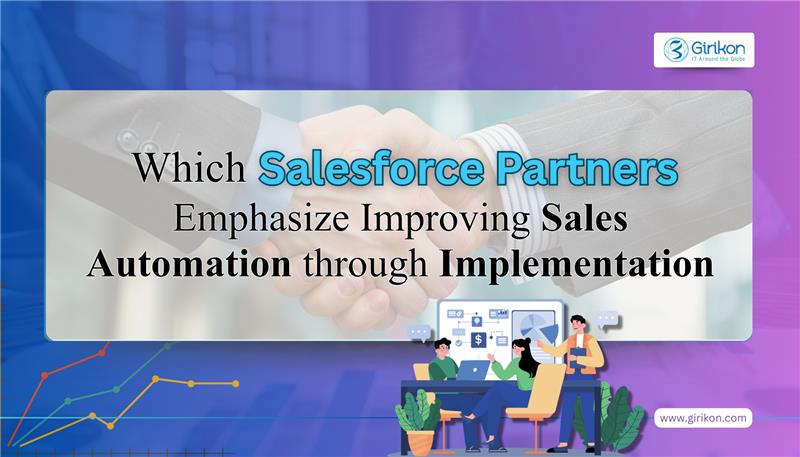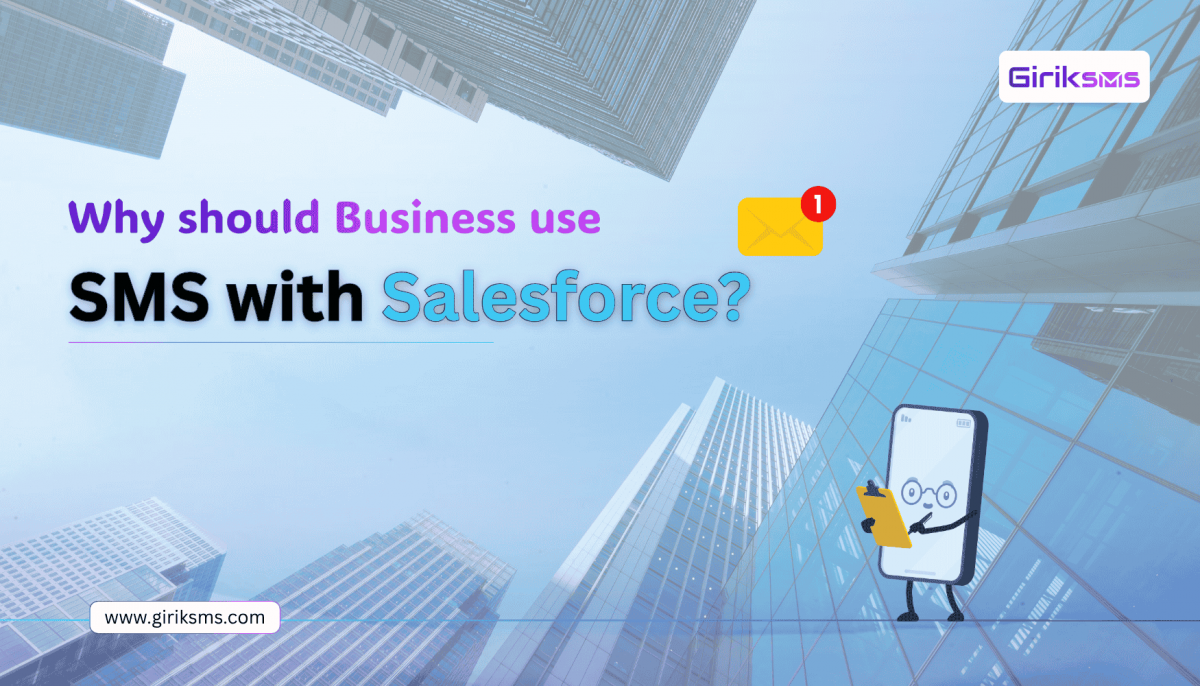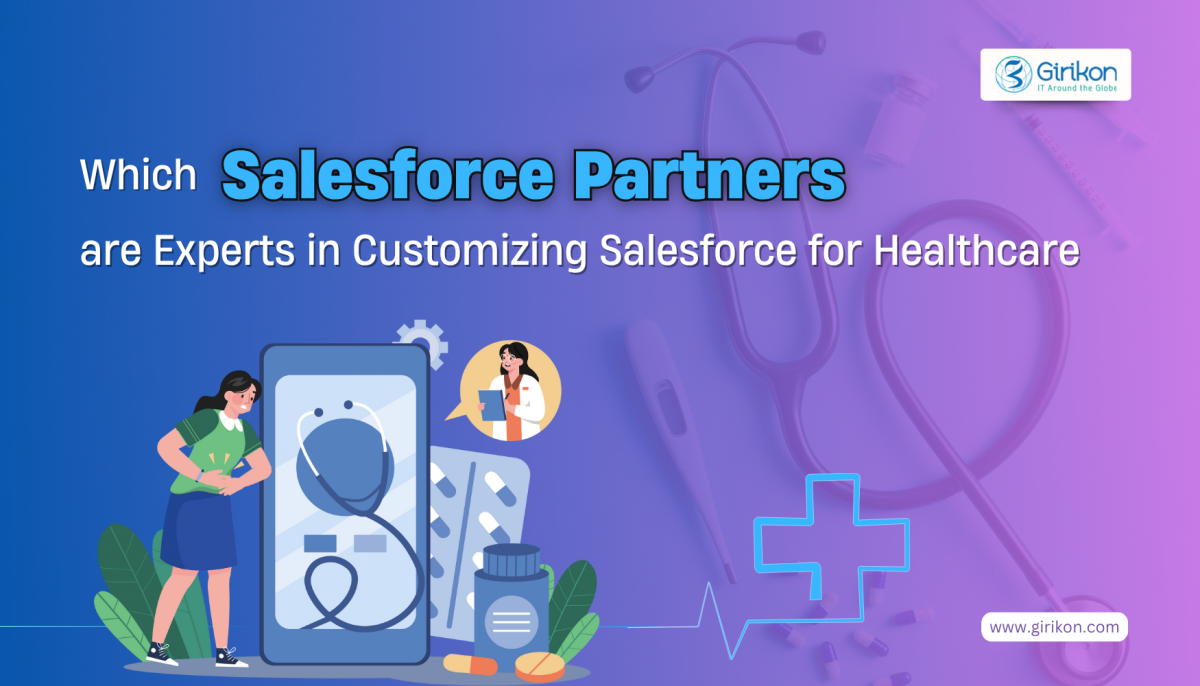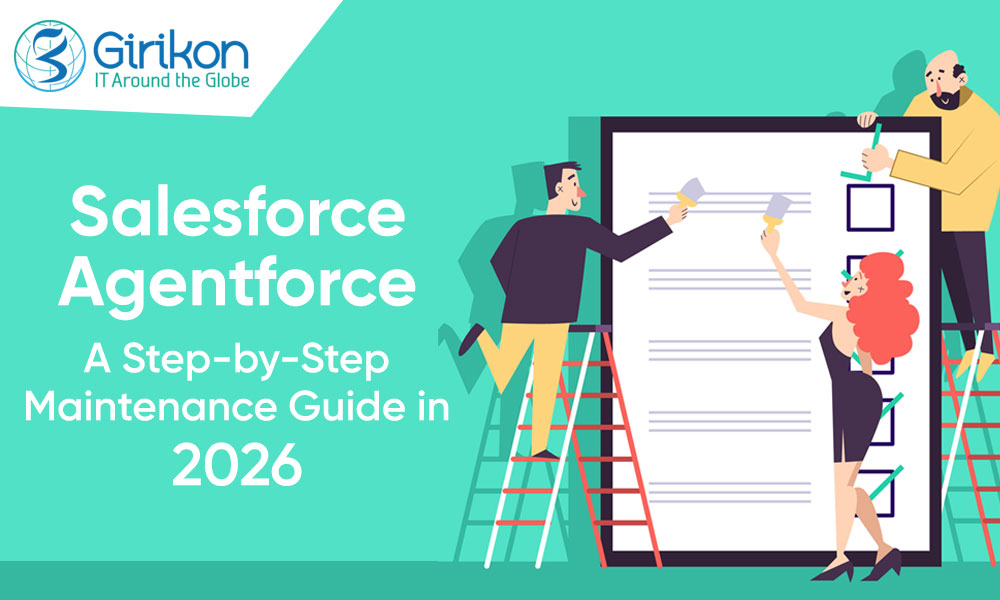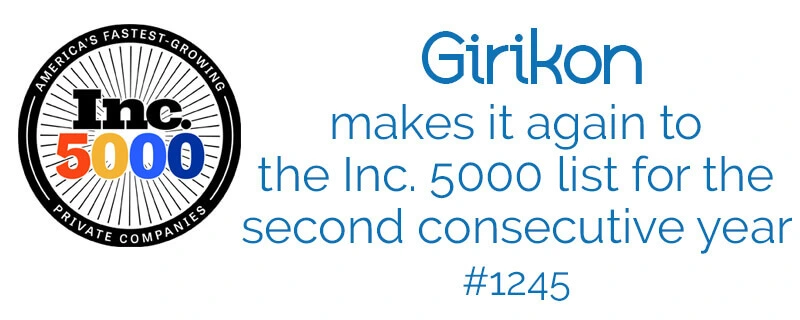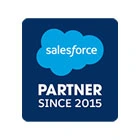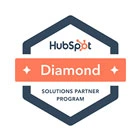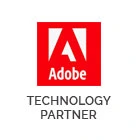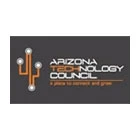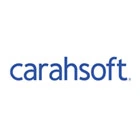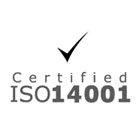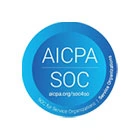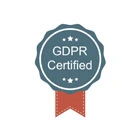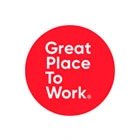Salesforce, the world’s leading CRM platform empowers businesses with tools and services to manage customer data, automate processes, streamline operations, and drive customer satisfaction. Salesforce consultants aren’t just experts at handling the software; they recognize that Salesforce is a great tool to improve business productivity and align themselves with customer goals, wants, and needs to unlock the true power of the platform. In short, they empower teams to do what was earlier not thought to be possible.
As a Salesforce Consulting Partner for over a decade, our experts have compiled a list of tips to guide the next crop of Salesforce consultants on their path to success. These tips are a result of over a 100-man years of Salesforce experience, countless hours spent with customer teams, and millions of lines of coding. Let’s dive right in.
1. Understand the ‘Why’
While there are certain skills that can be acquired such as data management, data analytics, and process automation, critical thinking is one area that can only be awakened from within. Critical thinking entails having a larger-than-life view of the business while having an in-depth view of the everyday activities of the organization. Many Salesforce consultants have a great technical background and are adept at turning requirements into recommendations and ideas. But what is truly required to be understood is the "Why". Why do they need it? What are their business goals and what is stopping them from achieving them? What are their people like? What are their pain points? What do they want in terms of work satisfaction? Finding answers to these fundamental questions will go a long way to advance your career in Salesforce consulting. You need to evolve from being a manager or business analyst to being a problem solver, and for that, you need to identify and understand the problem and all its constituents and dependencies to the last detail.
2. Adapt your communication strategy
Salesforce consultants have to work closely with engineering teams, customer user groups, and senior leadership which may sometimes be spread across the globe. For you to be successful as a global Salesforce consultant, you need to adapt your communication depending on who you are interacting with. Understanding the audience, their vision, and the way they see the business and its horizon (both short-term and long-term) plays a vital role in the success of the projects you are working on.
As an example, if you are interacting with engineering teams, you may want to interact in a way that they understand via a common language. As a representative of your organization (like a front office), you need to be aware of your unique communication style and how your interactions are received by others. As a thumb rule, communication strategy varies from who you are interacting with to the size of the group you are addressing.
3. Know Your Audience
Whether you are presenting to a CXO at a Fortune 500 company or interacting with individual project members, knowing your audience is one of the key skills all Salesforce consultants need to have.
When you are involved in multiple projects and have to interact with different audiences, whether it is for project updates or course corrections, an instinct is to use the same template for interaction. This approach rarely works as each individual user group has its own perspective and level of understanding. Recognize the value each stakeholder is seeking and develop a mindset to tailor your presentations to align with the audience.
4. Develop a self-help attitude
One of the job responsibilities of a successful Salesforce consultant is to hire new consultants. And you can only attract talent as good as yourself. When recruiting new consultants, veterans of the game often look for leadership traits such as taking self-motivated initiatives. What homework did they do before they sought help from seniors? Demonstrating a self-help attitude would go a long way in cultivating strong leadership and problem-solving skills.
5. Always be willing to learn
Salesforce consultants, especially ones who are still young in their consulting journey, need to constantly upgrade themselves on products, processes, and frameworks, but more often than not they get no guidance or direction. Well, if you want to grow, you are on your own. It’s your mindset to self-direct your learning and find solutions to challenges that will take you on the path to growth. Having a keen learner’s mindset goes a long way in building a keenness to take on new challenges and learn to grow.
6. Pick an Area of Expertise
While it’s great to be a jack of multiple trades (skills), it’s important to be very good at something. Whether it’s a certification in Sales Cloud or your early experience as a Salesforce administrator, it's important that you pick one area in which you are an expert. Expertise in a certain area builds client trust and establishes credibility. And once you pick an area you want to build further on, make sure you are up to date with the latest product innovations in that area and establish how you can help businesses leverage your expertise in these new innovations.
7. Know When to Say No
Customers want the moon. Literally. If it was left to them, they would want to implement their entire roadmap for the next 10 years as of yesterday. Many times, consultants agree to customer requests while working on a project even when they know it is not in their best long-term interest, or it just cannot be done at this stage. While customer satisfaction is extremely important in your line of work, you also need aware of what is in the best interest of the customer and the project. Make your point politely yet firmly, with an irrefutable basis. You were hired because you are an expert in your field, and this is time to say it emphatically. While it's always tempting to say yes to every customer request, learn to say no when you have a reasonable basis for it.
Draw on your past experience working with multiple customers on a variety of Salesforce projects. Offer alternative suggestions and help the customer see the larger picture. Your job as a Salesforce consultant is to be a partner with your customer, working towards a common goal and that job includes knowing when to say no.
Conclusion
Hiring a Salesforce consultant is an investment you make to achieve the heights that you envision for your business.
Ready to unlock the true power of Salesforce? Team up with a Salesforce Implementation Partner who can guide you on the right path.
Some Salesforce Consultants are successful in building a stable client base that they nurture and grow over time while others find it a rocky road and eventually hit a wall. Have you ever wondered what the difference is? Client relationships. Strong client relationships are the foundation for a successful Salesforce Consulting practice. Loyal customers are not only a joy to work with, but they also stay longer with you and are happy to refer new clients.
How to build lasting client relationships?
Below we have compiled a list of actionable ways to nurture and grow client relationships that will not only improve client satisfaction but also grow your business.
Pay attention to detail and gather all information
The foundation of a strong consultant-client relationship is laid before the client even signs up. Good consultants are aware they need as much information as possible about the prospect to come up with a proposal that stands out from the competition. And the key component of that proposal is how it aligns with the business’s goals and values and the personalities of the people you’ll be working with.
This means collecting “objective” information like:
Their products and services.
The end-users and their profile.
Top 3-4 competitors.
Prioritized goals and associated challenges.
Strategies that have not yielded desired results in the past.
Tools, apps, and systems currently being used.
Budget – long term and short term.
Expectations from a new consultant
It also includes “subjective” information such as:
What is their definition of success?
Future business plans such as new products or services.
Mission and values they stand for.
What is unique about them and how are they different from their competitors?
Skills, experience, interests, and preferences of the team you’ll be working with.
What are their pain points and wants from a new consultant?
Absorb the information
The intel you collected will be utilized not only in your bid document but will also be leveraged throughout the entire project execution lifecycle. Take the time to absorb and understand every point in depth so that it is made evident in everything you do.
Go above and beyond with your proposal
From the point of view of a project, your bid illustrates how you will go about achieving your client’s goals. From the point of view of a relationship, it’s an opportunity for you to demonstrate that you have a deep understanding of your client’s business and its people.
To be successful, you need to seamlessly link what and why.
What refers to activities included as a part of the project and why should link one of the "whats" to one of the business goals? Once you identify the why, establish the expected measurable outcome once the why is addressed. Include in your proposal how you will measure this outcome.
This approach demonstrates your commitment to the client’s business and its people and shows that you care about the people impacted by your proposed offering.
Have an onboarding process
Once the client has signed up with you, there are bound to be regular interactions across the user group. A smooth onboarding process sets the benchmark for free and open communication and ensures smooth execution which is necessary for a long-term client relationship. Start with a kick-off meeting to ensure everyone is on the same page and well-versed with the goals and expectations of the project.
Treat clients as partners
Treating your clients as partners in success lays the foundation for a purposeful and fruitful engagement, where both your and your client’s points of view are respected, and each does their best to ensure success. At the end of the day, it’s a transactional relationship and a well-defined partnership ensures that each party delivers its end of the bargain.
Be proactive
Share fresh ideas and propose new strategies.
Inform the concerned teams in advance about any disruptions that may be caused due to system changes or changes in requirements.
Educate the teams and empower them to be proactive.
A proactive approach based on transparent communication lays the foundation for a seamless execution and ensures success for all concerned.
Be a good listener
Clients can at times get reactive about results. While you may be doing a great job with your project, the results are not going through the roof. Instead of stone-walling the client’s perspective, use a more empathetic approach such as:
“I see what you’re talking about. It’s a valid point. “
“We’re glad you brought this up. Let us review this and allow us a week to report back to you.”
Position yourself as a partner in the journey. Value everyone's point of view, evaluate objectively, and present your findings to build a long, trusting relationship.
Establish a framework for communication
Conduct scheduled meetings with relevant stakeholders and end them with clearly defined action items
Set up weekly or fortnightly meetings to review progress and answer questions. Make the meetings more about listening than talking. This illustrates your intent to be accountable and helps build trust with the client. Leverage text messaging to build rapport and personal connections with team members and foster a more informal way of working.
Share your concerns early
This is particularly relevant when the business landscape is changing rapidly. Avoid saying yes to everything they want. Clients may have big plans and as a consultant, it's your job to double-check on everything they want for its viability, its efficacy, and impact on the overall project. Understand the challenges – both short-term and long-term, and communicate your concerns clearly.
Establish quarterly business reviews
Quarterly reviews with the senior leadership are a great way to build on relationships. Make these reviews focussed on high-level strategy, allowing the client to reflect on long-term goals. Review past strategies, what's worked and what hasn't, and pivot if need be.
Quarterly reviews are also the apt time for a client to provide insight into the changing business landscape, and the shift in goals (if any), and to establish how these changes impact the scope and budget of the ongoing project.
Strong client relationships are the backbone of a successful Salesforce Consulting practice. It lays the foundation for increased loyalty and referrals and makes the journey a joyful one.
The latest Summer '23 features have been released by Salesforce. If you are looking to upgrade your Salesforce instance, the right Salesforce Implementation Partner can help you with the implementation of these new features and training of your Salesforce admins to make your operations more efficient and productive.
Here’s a look at the top 10 features from the Latest Salesforce Summer ’23 Release
1. Integrated Analytics Services
The summer ’23 release comes with a consolidated interface for Analytics and Slack. Which means you can now enjoy a seamless engagement with all your CRM Analytics, Lightning reports and dashboards, and Einstein Discovery models and forecasts. The Analytics tab now comes with powerful search capabilities and recommendations, giving you access to organized statistics that you can turn to for all your Lightning dashboards and CRM Analytics.
Using the Post to Slack feature on Lightning dashboards, you can share information such as dashboards and CRM data with colleagues throughout Slack workspaces easily.
2. Unified Analytics
With the new release of Analytics Home, you no longer need to deal with analytics spread over different products. This new feature unifies all your CRM analytics data in a single place, allowing you easy access to information. Now you can get access to a consolidated view of all your CRM reports and dashboards in a structured and organised way, so you can easily access all the information you need to take quick decisions.
3. Customer Data Platform reimagined as Data Cloud
In the new release, Salesforce has transformed the erstwhile Customer Data Platform into Salesforce Data Cloud with all the necessary documentation and additional features.
4. Barring Unverified Emails Sent by Guest Users
This feature update disallows companies from sending emails from unverified email addresses of guest users. However, Salesforce customers that have a validated company-wide email address will not be impacted by this update. In such cases, the sender’s email address always updates to the authenticated email address. With the Latest Summer ’23 release, this enforced change effectively disallows shadowy emails from being sent by a guest user using an unverified email address.
5. Upgrade to Hyperforce Using Hyperforce Assistant
The latest Summer ’23 release comes with Hyperforce Assistant which streamlines the upgrade to Hyperforce. The new Hyperforce Assistant comes with the latest Hyperforce messaging authorization feature that has better in-built reference checks to support Salesforce organizations that have a large number of Apex classes. Hyperforce Assistant is available in all editions of Salesforce Lightning as well as Classic.
Once admins schedule the upgrade, they will be asked to initiate the assistant. Admins can activate the assistant manually in case you are scheduled for a major migration. During Setup, you can enter “Hyperforce Assistant” in the Quick Find Box and select the appropriate option.
6. Accelerated Quote Template Creation With OmniStudio Document Generation
Quote generation is now much simpler with this latest add on. With Salesforce CPQ Plus, your reps can easily create templates to generate quotes for your customers. You can generate a Microsoft Word file in the format and language of your preference, insert tokens and upload the document. Then associate the inserted tokens with relevant Salesforce fields. Your sales reps can then start utilizing the template once it is active. They can also easily convert their documents to PDFs. This Salesforce CPQ plus update is available in both Salesforce Classic and Lightning Experience.
7. Real-Time Collaboration with Partner Relationship Management for Slack App
This feature improves communication and collaboration across internal teams and external partners by bringing them together in a single channel using Slack. With Slack you can automate key business processes, and update and share records easily across collaborators. Partner Relationship Management for Slack connects your Salesforce CRM with partners seamlessly, with easy access to important information through partner portals, thereby boosting productivity, and fostering better communication. This upgrade impacts the Enterprise and Unlimited editions of Salesforce. The mandatory requirement to access this feature upgrade is to be a Slack Enterprise Grid user.
8. Codeless flow of External Data into Flow Builder
This new feature allows admins to use Flow Builder to automate processes that involve external data without the need for coding by developing an HTTP callout action through a web service API. Once you enter the API details, Flow Builder automatically generates a reusable callout action which admins can immediately deploy in Flow Builder and across Salesforce. This commonly used feature has witnessed several enhancements since the last update. Now it is easier to configure and edit the API responses to HTTP callouts. This allows the use of external data inflows to be simpler and more declarative. This upgrade is available across all editions of the Lightning Experience – Enterprise, Performance, Unlimited and Developer.
The reason why this feature has been introduced is that APIs often go through modifications, such as the addition of a new field or updation in an existing field in an external system. Admins with the relevant permissions in Manage Flow and Customize Applications can create an HTTP callout action.
Previously, admins had to modify the auto-generated API definition in JSON to modify the HTTP callout action. With the latest update, this action can be modified with just a few clicks. Instead of editing and configuring JSON to parse the API response, admins can easily select data types for fields. With this new feature, admins will also receive more lucid error messages, simplifying the troubleshooting process and prevent runtime issues.
9. Quick Create Sandbox to Enhance Productivity
Quick Create Full Sandbox is another new upcoming feature of the Salesforce’s Summer 23 Release. This feature accelerates sandbox creation and refreshing. This update means no additional actions will be required from Salesforce admins as it is the default setting. This feature will be available on eligible Hyperforce instances. Salesforce will initiate a staggered release after June 10, 2023, and users with the Manage Sandbox permission can use this feature.
10. Process Builder is on its way out.
Rules have changed. Process Builder does not have the capability of adding new processes anymore. However, you can still activate/deactivate existing processes or edit them. Having said that, it is recommended that for most use cases, you migrate to Flow Builder. The upgraded flow builder can take automation of business processes to a whole new level.
Summing Up
With the Summer ’23 release, Salesforce endeavours to make your daily tasks simpler, more efficient, and productive. The Summer ’23 release is designed to empower organizations to improve their engagement with customers, automate businesses processes, and drive growth.
At Girikon, a Gold Salesforce Consulting Partner, we recognize that staying up-to-date with these new changes in the Salesforce platform and leveraging the new capabilities are key to maximizing your Salesforce RoI. Contact one of our experts today to know more about how you can make the most of these exciting new features of the Summer ’23 Release.
Digital transformation is not a goal post. It’s a continuous journey involving the evolution of people and processes. Here are some of the steps you could take to transform your business digitally and advance your business growth.
How can you advance transformation in an hour?
Do your homework. Education is the first step to empowerment. Study about organizations that have had a successful digital transformation. There are many great case studies to explore. Comb your network and identify someone that you might know at a senior level who was part of the digital transformation at one of these companies. Schedule a time for a discussion to pick their brain. In fact, do one better. Become a customer of these businesses if you are not one already. Use their app, social media pages or other digital touchpoints to get a first-hand experience of what they have created and how they deliver the customer experience.
Get conversational. For most people, the phrase digital transformation can seem ambiguous. It’s a broad term and a discussion on it may revolve around technology, business models, and emerging trends. Businesses are embracing new technologies to reinvent how they work, to connect with customers, and to innovate. It would be prudent to invest an hour in reading the latest about how business leaders see the future of work, navigating through change, and the impact of technology on the economy from renowned publications and organizations such as the World Economic Forum.
Identify a champion. Even before COVID19, many digital transformation initiatives did not work out. In fact, some of them failed miserably. And this evidence became immediately tied to digitization without clearly defined purpose, outcomes, or ROI. Avoid these pitfalls by identifying a champion for your digital transformation, be it the CTO or someone else, who can own and drive the change from the very start. They should have clear and to the point discussions with all business units about what digital transformation implies and what they will get out of it. And while you identify that champion, also come up with a responsibility matrix for cross-functional overlap and ownership.
How can you advance transformation in one quarter?
Run an innovation pilot. Choose a customer journey that you recognize must be digitized. Put together a small cross-functional team (take the help of an external consultant if required) and throw them the gauntlet. Ask them to build a digital journey prototype in three or four iterations. Hand over this pilot to real customers to do a test drive to demonstrate what’s possible.
Automate a single business process. A simpler way to imagine digital transformation is through automation of a business process. Put together a cross functional team to use collaboration and workflow tools, for instance Salesforce Slack, to streamline or redesign a business process that is manual, repetitive and causes pain for your team today. For instance, scheduling meetings with team members spread across multiple time zones can be a difficult task. If a technology tool can help teams collaborate asynchronously, it may free up meetings stacked up in your calendar and free up staff inboxes. This improves work efficiency, augments capacity, and enables better coordination between your teams.
Identify the gaps. More often than not, business leaders don’t know what data they have access to, or where it lies. Spend time to get a complete view of data across the entire organization. Don’t just ask the senior management. Ask your peers and subordinates. The further down you go in hierarchy, the more likelihood of finding honest answers. To measure the digital transformation you seek to bring to the organization, you need to understand the true picture of all data.
How can you advance transformation in a year?
Renovate one business function. Whether it’s making your supply chain more visible by integrating the Internet of Things (IoT) and blockchain technology or if it’s renovating your data systems to support better production planning and analysis. Choose one key business function and rebuild it digitally from ground up. Set challenging goals, timelines and identify measurable criteria, and use objectives and key metrics to drive effort and outcomes.
Create a roadmap. Do achieve the desired outcome from your digital transformation, your vision and plan require critical inputs from customers and employees, to establish how technology innovation can help you meet their expectations. Eventually, driving innovation requires a great deal of perseverance built on a powerful foundation of data, tools, and skills. And digital transformation is not just the implementation of technology. It also necessitates changes in user behavior, and for that a fresh perspective may be necessary. So, don’t attempt this digital journey alone. Collaborate with technology agencies, systems integrators, consultants, and independent software vendors that can help you throughout your digital transformation journey with strategic planning, change management support, implementation best practices, training and upgrades.
Reimagine your relationships. On the other side of digital transformation lies relationship transformation. Define how you want an ideal customer and employee relationship to be, and then guide the transformation. The following questions would guide you along the journey:
How have the operational and technology changes impacted your relationships with your customers?
How can you improve staff efficiency?
How can you ensure staff wellness?
What are the areas of improvement?
What are the areas of friction?
What are the new ways to add value to customers and employees?
Study other companies. Not just the ones in your industry, but across the business landscape. Everyone has customers, identify who is delivering the best customer experiences. Learn from them and bring those learnings on board.
Re-imagine the way you use data. Static dashboards are a thing of the past. Instead, explore using real time data in meetings, driving the discussion with dynamic data. Augment your internal communications with data-driven insights and be transparent. Include the uncertainties these data reveal. Ensure all employees have comprehensive training on data fluency and measure the training objectives at the end of the training as a key business objective. Promote a culture of making data driven decisions. Be aware of when your employees can’t make decisions because data isn’t available, and work diligently to fill those gaps quickly.
Girikon is a Gold Salesforce Consulting Partner. We have worked with businesses across the globe and delivered success for over a decade. To know more about how Digital Transformation can benefit your business, contact an expert today.
Global Digital Skills Index from Salesforce research conducted in 2022 indicates a growing digital skills crisis. The in-depth research about digital skills is based on a survey with 23,000+ respondents (existing and prospective workers) across 19 countries. It includes areas such as their impact on the future of work, their job readiness concerns, and the importance of continuous up-skilling.
Most businesses have realized the significance of going digital. However, the digital landscape is extremely competitive and sustenance requires businesses to automate their processes while ensuring operational efficiency. This is where the need for a robust CRM arises. As a cloud-based platform, Salesforce enjoys huge popularity and widespread adoption.
However, unlocking the actual potential of a Salesforce platform can be challenging for businesses without the support of a Salesforce professional. It’s crucial for organizations to partner with a reliable and experienced Salesforce consultant that can help them overcome their limitations and unlock the immense potential of this platform.
A consultant can provide necessary support and guidance regarding upgrades and customizations that can make your organization more productive across your business processes. Their ability to troubleshoot problems through Salesforce can help you deal with unique challenges while figuring out solutions that will help your business flourish.
Why Should You Engage the Services of a Salesforce Professional?
A Salesforce consultant has extensive experience in handling this robust customer relationship management (CRM) platform. Being professionals, they remain up-to-date on the latest product upgrades and applications while ensuring quality, productivity, and reduced costs.
The services offered by a reliable Salesforce consulting partner include more than just the basic platform functions but can also help create custom tools, manage integrations, and leverage the complete capabilities of the platform. From nonprofits to building services to businesses in the financial and healthcare sector, almost every industry can take advantage of these optimizations.
Listed below are some of the key benefits of Hiring Salesforce Consulting services:
Data Migration from Other CRM platforms to Salesforce: If you haven’t used Salesforce before, you would not just require setting it up for the first time but also migrate your data from an outside source. A professional can help you set up the CRM seamlessly besides managing the migration in a way that every component is handled optimally. Additionally, they will help you keep your data organized and clean so that it becomes easy for you to sort through them.
Setting Up Customized Dashboards: To draw maximum value out of your CRM, it’s important to get your dashboard customized. For creating customized dashboards based on your business needs, Salesforce offers multiple options. However, creating customized dashboards in Salesforce isn’t easy and requires custom fields for accommodating certain tools and calculations, which your team might require to find quality leads. A professional service provider can enable you to design a dashboard as per the unique needs of your business, which will maximize data analysis and ultimately give a boost to your business. With a dashboard, it becomes easy to filter your data, quickly find the information you require, and track your prospects.
Providing Training and Support: The upgrades and updates of Salesforce make the platform valuable. However, several organizations struggle to keep up with these changes. To understand which upgrades will have the maximum benefits, you must consider getting in touch with a reputed consultant who will manage essential updates and upgrades for you that will increase productivity and benefit your unique. They also assist in training your employees so that user productivity on the platform increases. This will empower your team to bring in more customers and close more deals. Proper support for training and Salesforce implementation will allow everyone to work more efficiently.
Maintaining an Organized System: Data gathered by sales reps when organized from time to time plays an important role in upholding the usefulness and functionality of the Salesforce platform. Some organizations end up deserting their Salesforce integrations when their data becomes unsystematic and unmanageable. This problem usually arises when several sales reps log in at the same time and enter records incoherently. An experienced Salesforce partner can help by auditing the records while preventing a buildup of unusable records.
They also help in sorting data and taking necessary steps to prevent the accrual of glitches in the first place. They can assist in the creation of custom wizards that will guide sales reps through data entries, creating uniformity and consistency within the data entry irrespective of who created the entries. Custom wizards can be used to streamline the Salesforce quoting process, which requires several steps and doesn’t assure uniformity.
Augments Your Ability to Find New Leads: Salesforce empowers your sales reps to collaborate easily with prospects and several new customers irrespective of where they are. The robust CRM promotes communication skills along with collaboration within teams thereby boosting productivity, as well as the ability to find leads.
Salesforce consultants play a significant role in motivating your internal sales team members. You can create healthy competition among your sales reps through gamification. Based on key metrics from the CRM, consultants can help create leaderboards so that all your sales reps can view each other's results, as well as bests in different categories.
Final Words:
Salesforce has emerged as the number one platform in the CRM space. With its wide array of features and functionalities, Salesforce has become the preferred choice of businesses. However, to make the most of this amazing platform, it’s important to partner with one of the best Salesforce consultants who can take customer communication to a new level. They can help businesses utilize the tools that can automate processes and ensure operational efficiency.
Customer Relationship Management Software, widely referred to as CRM software, is playing a vital role today across enterprises of various sizes. By aggregating and managing customer data, Salesforce CRM enables enterprises to manage a wide range of key business functions such as lead generation and conversion, sales and marketing, tracking customer engagement and automating workflows. As enterprises are able to streamline their business processes with CRM software, each of these individually separate functions and activities are now better streamlines and integrated, resulting in higher levels of customer satisfaction.
Implementing a Salesforce CRM within your organization can be a bit of a challenge. Although Salesforce CRM is the world’s most advanced and innovative CRM platform, there are always implementation and migrations challenges associated with working with a new system, as your team migrates key information to the new platform and adapts to work with it. This transition however, can be simplified significantly if you have a dedicated Salesforce Consultant to help your teams adapt to this new system.
What is a Salesforce consultant?
A Salesforce Consultant can help you overcome limitations, unlock the Salesforce CRM platform’s full potential, and augment Salesforce’s out-of-the-box functionality.
A Salesforce consultant is an experienced professional with significant expertise implementing the Salesforce CRM platform. And because this is their area of expertise, they would be more than likely to stay up-to-date with the latest product updates and tools, to enable them to deliver agile implementation and drive productivity.
Salesforce Consulting goes beyond the basic implementation of the Salesforce CRM platform. Third party integrations, creating custom apps, and leveraging the platform’s full capabilities and driving adoption of your users are also some of their key responsibilities. Almost any business in any industry can take advantage of these customizations, from nonprofits to manufacturing, financial services to healthcare, and more.
Why should you hire a Salesforce consultant?
Hiring a Salesforce consultant can help you maximise the potential of the CRM platform. You would be able to connect with and understand your customers better, and deliver personalized experiences for your clients and prospects. As an organization, you’ll also be better prepared to provide agile support to your customers. And you will be able to track the entire customer experience and improve further.
Before we go into what are the roles of a Salesforce Consultant, let us understand some of the constraints they have to work with.
Salesforce CRM implementation is a resource-dependent process. Therefore, the consultant must address the resource needs associated with is before going ahead with implementing a solution.
1. Workforce Constraints
The Salesforce consultant needs to be aware of the workforce constraints that exist in the organization. The organization and the consultant must arrive at a common understanding or how much of the organizational workforce can be used to implement the solution. Conversely, the solution has to be designed keeping the workforce size in mind. The consultant needs to understand the work responsibilities of each staff member so that an optimum solution can be developed. Workforce availability constraints must also be considered during the implementation, training, and go-live processes.
2. Time Constraint
Every technology solution is designed for under a specified timeline and for a specific purpose that must be fulfilled at the earliest. The CRM solution has to be designed based on the established timeline with all checks and balances in place to address any schedule deviations at key milestones.
One of the key challenges for the consultant is to stick to the timelines so that the implementation is relevant and useful. The implementation should not add delays to the existing schedules. In fact, it should optimize the existing schedules to augment efficiency.
3. Skill Constraints
The Salesforce Consultant needs to have a good understanding of the gap between the desired skill set and the existing skill set of the workforce. Not only should the CRM solution be usable by the workforce, but it should also trim the gaps in sills for better productivity. Th user experience should be such that it is easy and effective.
Roles of a Salesforce Consultant
The Salesforce CRM platform is a suite of complex tools and features and tools if properly implemented can maximum profits. It comes with a high degree of flexibility to ensure alignment with almost any business requirement. It is the prerogative of a Salesforce Consultant to be aware of the scope of customization so that the implementation is smooth and effective. Having said that, the organization needs to first identify which of its business processes it wants to customise and/or optimize in Salesforce. Here are some of the key roles and responsibilities of a Salesforce Consultant for an effective CRM implementation.
1. Relationship Management
The Salesforce Consultant has a key role to play in the client company equation. The Salesforce consultant brings a certain value to the organization that can potentially be extended to their clients. Salesforce Consulting can help evolve the sales process and affect the clients for the better.
Clients are the key touchpoints for an organization since they generate revenues. The relationship between the organization and its clients is a make-or-break deal. It is vital to create and maintain a relationship of mutual trust and business ethics for long term growth.
A Salesforce Consultant can utilise specific features of the Salesforce CRM platform to generate more sales opportunities. One of the key responsibilities of the Salesforce consultant is to develop a deep understanding of the client-company relationships and advise the company on how to augment that relationship further. With the powerful Salesforce CRM platform, the Salesforce consultant creates more efficient business process to drive productivity. It allows the client to feel that he is an equal partner in the process of change. In fact, in several cases, the Salesforce consultant is the first point of contact for customers.
2. Organize meetings and keeping the teams updated
The Salesforce consulting partner is a key contact point for clients and client companies. Even though organizations prefer automation and intelligent, innovative, feature-rich systems, they want to meet and discuss with someone who has a good understanding of what all the CRM platform can do and how those features can be extended to its users. The Salesforce Consultant should organize meetings with clients and share status updates of how the implementation and adoption is going. While it is easy to provide status updates on multiple projects in a single dashboard, a consultant ensures accurate, consistent and periodic sharing of updates with the users.
3. Building and deploying Salesforce
The primary role of a Salesforce consultant is to build and deploy a Salesforce CRM solution that is customized for the company and its clients. The Salesforce Consultant has to ensure that all business processes that have been discussed and agreed upon by the company have been implemented.
4. Providing training and support
Like any other enterprise platform, Salesforce updates its platform thrice a year to make it more available to its users. However, most businesses find it a daunting task to keep up with these upgrades, or they don’t know which upgrades will have deliver the greatest benefits to them.
A Salesforce Consultant will help you with that. They will help you in understanding which updates will benefit your organization the most and boost productivity based on your unique needs.
This assistance also needs to extend to your staff. Not only do you need a user friendly and efficient system, but you also want your staff to know how to access the information they need to fulfil their work responsibilities. They should feel fully capable to navigate and use the CRM platform. Your consultant will provide the necessary training to boost user adoption and productivity on the platform, empowering them to close deals faster and also acquire more customers. A thorough Salesforce implementation, training and adoption program across your organization is the foundation of a customer-centric business.
Finally, you will discover that greater the support you get from your consultant, the lesser the number of queries you have about the platform. The consultant can provide you with the necessary help and support, which means having to submit lesser help tickets. You have your own in-house expert who can all answer your questions related to the CRM platform and provide the necessary training as and when problems arise. Hiring a qualified Salesforce consultant creates a more seamless experience for everyone in your organization.
If your business could do with more customers, working with a Certified Salesforce consultant might be the key to tapping into that potential market. Turn to Girikon to implement a solution that can help you drive growth for you. With a large pool of certified professionals, and a global delivery model, Girikon makes it easy for you to focus on what you want to do – deliver customer delight.

 +1-480-382-1320
+1-480-382-1320 +44-7428758945
+44-7428758945 +61-1300-332-888
+61-1300-332-888 +91 9811400594
+91 9811400594